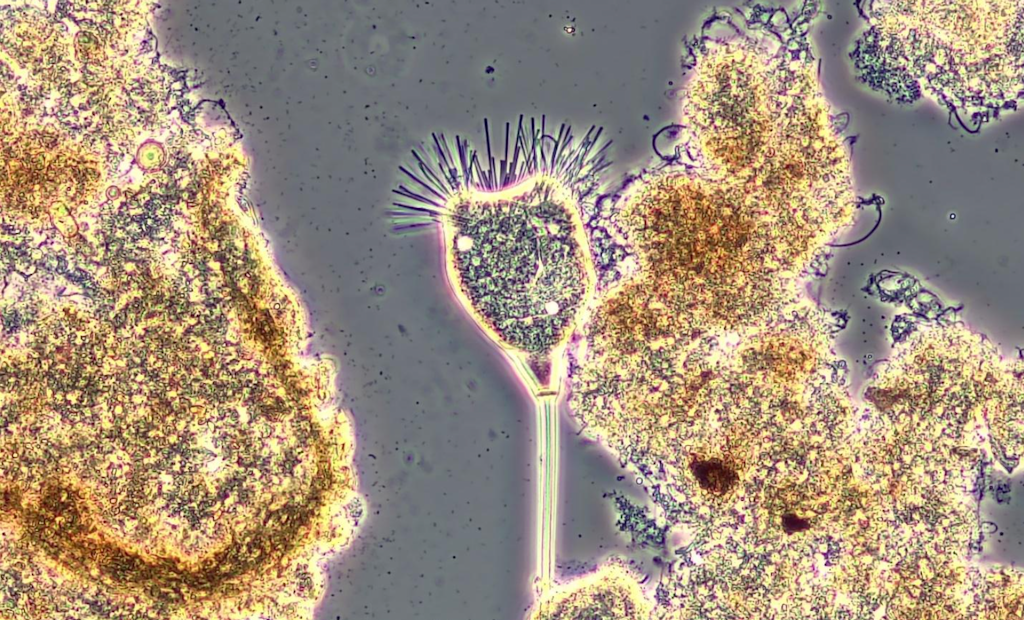Interested in Laboratory?
Get Laboratory articles, news and videos right in your inbox! Sign up now.
Laboratory + Get AlertsA suctorian is a protozoa from the order Suctoria, which includes both saltwater and freshwater organisms. Suctoria are widely distributed in nature and occasionally compete in biological wastewater treatment processes. Young suctoria are free swimming, and as they mature, they become immobile and use tentacles (rather than a mouth) for feeding purposes. When feeding, suctoria become attached to their prey, which are often paralyzed immediately upon impact and suck the contents out of other ciliates or rotifers through their tentacles.
Most protozoa reproduce through binary fission, while suctoria are recognized to reproduce either through budding (asexual reproduction) and/or conjugation (sexual reproduction). Budding is the predominant mode of reproduction, which may occur internally or externally, in which components of the parent cell begin dividing. The new cell develops within the “pouch” of the parent cell and eventually escapes in a free-swimming form.
Adult suctoria generally range between 15-30 µm in length and approximately 7 µm in width. Suctoria are readily recognized through their tentacles. For practical and operational purposes in the wastewater treatment facility, suctoria may be recognized in a similar category as stalked ciliates — generally indicating good overall health. However, in the vastly competitive arena of wastewater microbiology, they are vicious killers!
About the author: Ryan Hennessy is the principal scientist at Ryan Hennessy Wastewater Microbiology. He was trained and mentored by Dr. Michael Richard for over 10 years in wastewater microbiology, and serves as a microbiology services consultant. Hennessy is a licensed wastewater treatment and municipal waterworks operator in the state of Wisconsin and fills in as needed for operations at several facilities. He can be reached at ryan@rhwastewatermicrobiology.com. Hennessy's new book "Wastewater Microbiology: Filamentous Bacteria Morphotype Identification Techniques, and Process Control Troubleshooting Strategies" is now available on Amazon.






